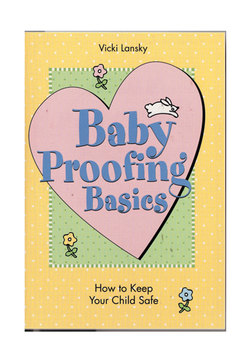Читать книгу Baby Proofing Basics - Vicki Lansky - Страница 11
На сайте Литреса книга снята с продажи.
THE HIGHCHAIR
ОглавлениеOne of the most necessary pieces of baby equipment is also one of the most potentially dangerous. The Consumer Product Safety Commission estimates that in one year 7,000 children were treated in hospital emergency rooms as a result of accidents involving highchairs.
Check the highchair you buy — or borrow — carefully. Be sure it has a wide base and a tray that locks securely. The buckle on the restraining strap should be easy to fasten. Caps and plugs on tubing on a metal chair should be firmly attached.
Be sure the tray is locked after you put your baby into the highchair and always hook up the restraint system. It’s important to keep the highchair clean. Stuck-on food can interfere with the locking mechanics and cause its restraint system to fail.
Watch your baby’s fingers as you put the tray on. When your child is old enough to understand, you might use the watchwords “Hands Up” to help make sure fingers are out of harm’s way.
Put bathtub decals or a rubber sink mat on a slippery highchair seat so your child is not prone to slipping down the seat.
Be sure any item attaching a bottle or small toy to the highchair is no longer than 12 inches. Pacifiers can be attached to clothing with pacifier holders that can be purchased in baby departments. The ribbon on them should be no longer than seven inches. Longer string is a strangulation hazard.
Never leave a baby alone in a room in the highchair, even with the safety strap securely fastened. Any child will try to climb out of it eventually if you’re there or not. And remember, the highchair tray is not an adequate child restraint!
Keep the highchair at a safe distance from the table or counter. Any child can tip a highchair over by pushing off with hands or feet. Standing up in the chair or rocking it back and forth can also cause it to tip.
Teach older children not to climb on the highchair with or without a baby in it. That’s equally dangerous.
THE KITCHEN
